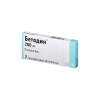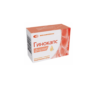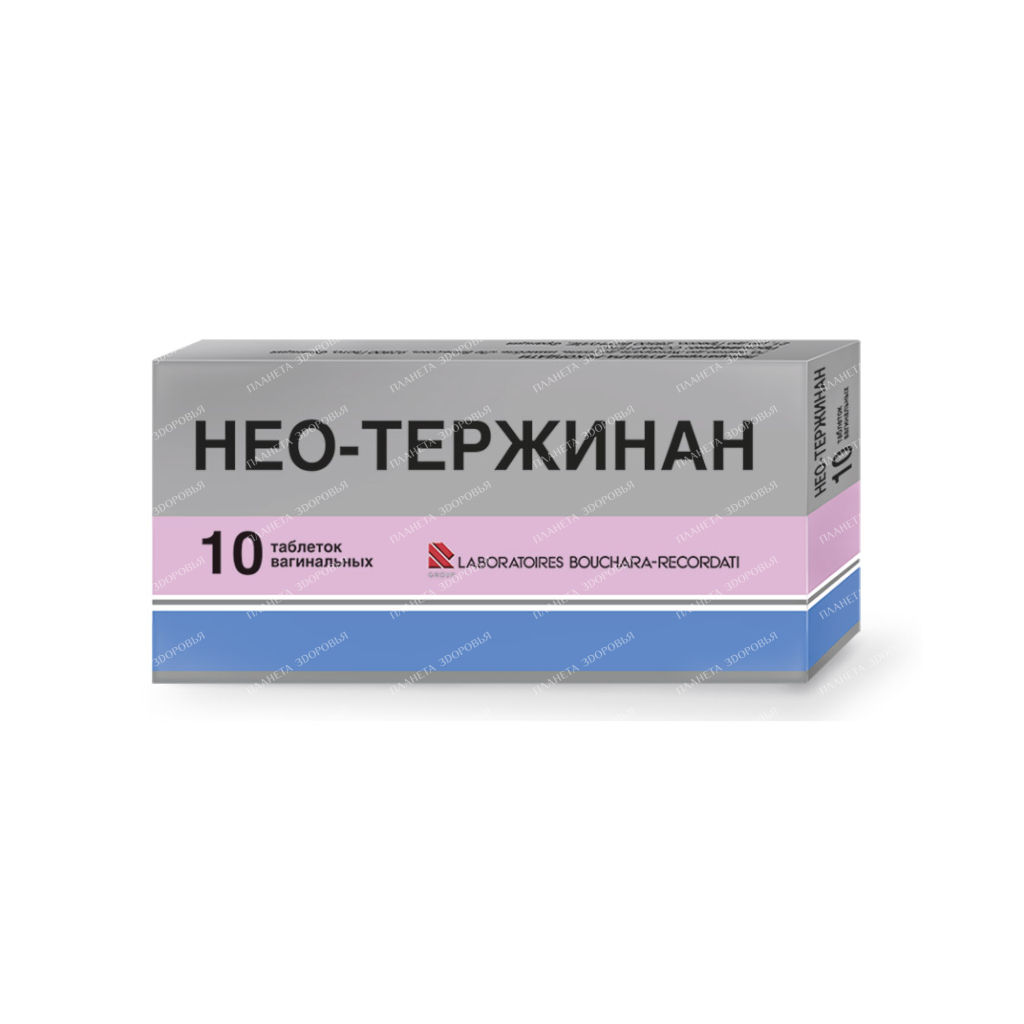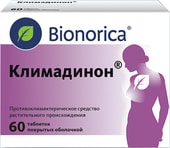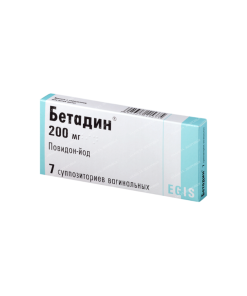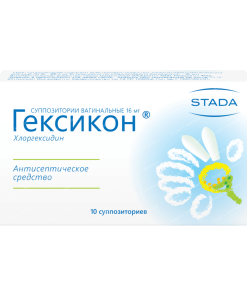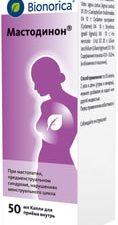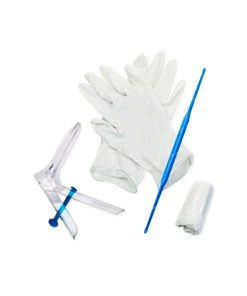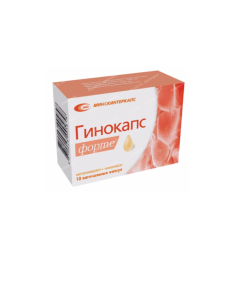Name:
Neo-Terzhinan. Ingredients: Metronidazole 500mg; Neomycin sulfate 65,000 IU; Nystatin 100 000 ME. Excipients: wheat starch, sodium starch glycolate, talc, microcrystalline cellulose.
Description:
Pills are light yellow in color with possible inclusions of darker or lighter shades, flat, oblong, embossed in the form of the letter “T” on both sides. Indications for use Local treatment of vaginitis caused by susceptible microorganisms (bacterial vaginitis, vaginal trichomoniasis, vaginitis caused by fungi of the genus Candida, mixed vaginitis), as well as nonspecific vaginitis. It is necessary to take into account the official instructions for the use of antibacterial agents. Method of administration and doses Dosage: INTENDED FOR ADULTS. One vaginal tablet 1 to 2 times a day, as needed, in combination with oral therapy. Treatment with metronidazole should not be given for more than 10 days and should not be repeated more than 2-3 times a year. How to use Vaginally. It is recommended to wash your hands thoroughly before insertion, moisten the tablets by immersing them in water for 2-3 seconds, and then insert them into the vagina to a comfortable depth (it is easier to perform the procedure lying on your back, bending your knees), and remain in the accepted position for about 15 minutes. In case of vaginal dryness, the vaginal tablets may not dissolve completely. Practical advice During treatment, personal hygiene recommendations (cotton underwear, avoiding vaginal douche, not using hygienic tampons during treatment) should be followed and, if possible, any disease-provoking factors should be excluded. Treatment should not be interrupted during menstruation. Sexual partner(s) should be treated at the same time, regardless of whether they have symptoms of the disease. Contraindications This drug is contraindicated in case of hypersensitivity to one of the components. This drug is usually not recommended: in combination with disulfiram (see section “Interactions”); in combination with spermicidal preparations Special instructions and precautions Therapy should not exceed 10 days. If adverse reactions occur (see section “Side Effects”), treatment with the drug should be suspended. During therapy, it is recommended to reduce the amount of alcoholic beverages consumed (antabuse-like syndrome). It is necessary to monitor the leukocyte formula in hematological diseases and therapy in high doses (and / or long-term treatment); Metronidazole immobilizes treponema, which can lead to a false positive in the diagnosis of syphilis using the Nelson test; Due to the content of neomycin, the duration of treatment should be limited due to the risk of development of resistant microorganisms and the occurrence of secondary superinfection. Interaction with other medicinal products and other forms of interaction Interaction with the following medicinal products is contraindicated + Spermicides When topical vaginal preparations are used, therapy with contraceptive spermicides must be discontinued. + Alcohol Antabuse-like syndrome (fever, redness, vomiting, tachycardia). + Disulfiram When combined therapy with disulfiram, symptoms of delirium or confusion are possible. Interaction with the following medicinal products is not recommended + Oral anticoagulants (warfarin) Increased risk of hemorrhagic complications due to slower catabolism in the liver. The need for regular monitoring of prothrombin levels and fixation of INR. For the duration of metronidazole therapy (and for eight days after stopping treatment), an appropriate dose of oral coagulants should be selected. Interactions with the following medicinal products should be taken into account + 5-fluorouracil Increased toxicity of 5-fluorouracil due to a decrease in its excretion rate. Pregnancy and lactation The use of the drug during pregnancy and lactation is possible only on prescription in cases where the expected benefit to the mother outweighs the potential risk to the fetus. Pregnancy There are limited data on the use of this medicinal product during pregnancy. Given that this medicinal product contains an aminoglycoside antibiotic (neomycin), which may be ototoxic, and the potential for systemic exposure, this formulation is not recommended for use during pregnancy. Lactation The use of this drug during lactation is not recommended, due to the lack of sufficient data on the penetration of its components into the mother’s breast milk. Influence on the ability to drive vehicles and other mechanisms Drivers and operators working with mechanical equipment should be warned that this drug may cause dizziness. Side effects Due to the use of the drug, the following side effects were noted: Rarely: minor disorders of the digestive system: nausea, “metallic” taste in the mouth, anorexia, epigastric colic, vomiting, diarrhea. Very rarely: symptoms of diseases of the mucous membrane and skin, flatulence, glossitis, accompanied by a feeling of dry mouth; neurological symptoms: headaches, dizziness; reversible pancreatitis. With prolonged therapy and / or therapy with high doses: moderate reversible leukopenia; sensory peripheral neuropathy, regressing at the end of treatment. In addition, it is possible to stain urine in a red-brown color, due to the presence of soluble pigments – metabolic products. Overdose No cases of overdose with the drug in the form of vaginal tablets have been reported. Cases of moderate reversible leukopenia and sensory peripheral neuropathy have been reported, the symptoms of which disappear at the end of treatment. In acute or severe overdose, symptomatic treatment is prescribed, since an antidote for metronidazole has not yet been obtained. Pharmacotherapeutic group ATC code: G01AA51. Antiseptics and antimicrobials for the treatment of gynecological diseases. Pharmacological properties Metronidazole is an anti-infective agent of the nitroimidazole group. Neomycin is a broad-spectrum antibiotic from the aminoglycoside group. Nystatin is an antifungal antibiotic from the group of polyenes, highly effective against yeast-like fungi of the genus Candida. Spectrum of antibacterial activity Metronidazole At critical concentrations, there is a separation of susceptible strains from strains of intermediate sensitivity, as well as strains of intermediate sensitivity from the most resistant: S ≤ 4 mg/l and R > 4 mg/l The degree of acquired resistance may vary in certain species depending on the range and exposure time. Therefore, it is important to have information about the degree of local resistance, especially when treating severe infections. These data can serve as a guide in determining the sensitivity of a bacterial strain to a given antibiotic. BACTERIA SENSITIVE TO METRONIDAZOLE Gram-positive aerobes include Helicobacter pylori. Major anaerobic bacteria: Bacteroides ffagilis, Bifidobacterium, Bilophila, Clostridium, Clostridium difficile, Clostridium perfringens, Eubacterium, Fusobacterium, Peptostreptococcus, Porphyromonas, Prevotella, Veillonella. METRONIDAZOLE RESISTANT BACTERIA Gram-positive aerobic bacteria: Actinomyces; Anaerobic bacteria: Mobiluncus, Propionibacterium acnes. ANTIPARASITAR ACTION Dysenteric amoeba (Entamoeba histolytica); Giardia intestinalis (Giardia intestinalis); Trichomonas vaginalis (Trichomonas vaginalis). Neomycin The prevalence of acquired resistance of microorganisms to antibacterial agents may vary geographically and over time for individual species of microorganisms. Therefore, it is necessary to have information about the resistance of microorganisms in this region, especially in the treatment of severe infections. These data can only indicate the degree of probable sensitivity of the bacterial strain to this antibiotic. Main strains sensitive to neomycin: Gram-positive aerobes such as Corynebacterium, Listeria monocytogenes and Staphylococcus meti-S, as well as some Gram-negative aerobes such as Acinetobacter baumannii, Branhamella catarrhalis, Campylobacter, Citrobacter freundii, Citrobacter koser, Enterobacter aerogenes, Enterobacter cloacae, Escherichia coli, Haemophilus influenza, Klebsiella, Morganella morganii, Proteus mirabilis, Proteus vulgaris, Providencia rettgeri, Salmonella, Serratia, Shigella, Yersinia. Note: this spectrum corresponds to systemic antibacterial drugs. The concentration created locally with topical application is higher than in the systemic circulation. There are limited data on topical kinetics, local physicochemical conditions that may affect in situ drug activity. Pharmacokinetic properties Metronidazole After administration by the vaginal route, the systemic response of the body is weak. The plasma half-life is 8 to 10 hours. Communication with plasma proteins is weak, less than 20%. The distribution of the active substance is carried out quickly and affects the most important tissues, organs and systems: kidneys, liver, gallbladder, cerebrospinal fluid, skin, saliva, vaginal discharge. The active substance crosses the placental barrier and passes into breast milk. Metabolism occurs mainly in the liver: two active oxygen metabolites are formed (activity is from 3 to 5%). The active substance is excreted from the body mainly by the kidneys. Metronidazole and active oxygen metabolites make up approximately 35-65% of the absorbed dose and are excreted in the urine. Release formVaginal tablets. 10 tablets in a strip (aluminum foil), one strip with instructions for use is packed in a cardboard box. Shelf life 3 years. Do not use after the expiration date. Storage conditionsStore at a temperature not exceeding 25 °C. Keep out of the reach of children. Conditions for dispensing from pharmacies By prescription. Buy Neo-Terzhinan vaginal tablets No. 10×1 Price for Neo-Terzhinan vaginal tablets No. 10×1 Instructions for use for Neo-Terzhinan vaginal tablets No. 10×1
| INN | OTHER |
|---|---|
| The code | 134 917 |
| Barcode | 3 592 754 152 564 |
| Active substance | metronidazole, neomycin, nystatin |
| Manufacturer | Sofartex, France |
| Importer | UE "MedVay" Minsk, 220026, Minsk, Zhilunovicha st., 8, room 2H; Commercial private unitary enterprise "Capsipharm", 223016 Minsk district, Novodvorsky s / s, 6-18; Closed joint-stock company "Unipharm", 223060, Minsk region, Novodvorsky s / council, 40-1, room. 36, area of the village of Bolshoye Stiklevo; IOOO "Interfarmaks", Republic of Belarus, 223028, Minsk region, Minsk district, Zhdanovichsky s / s, ag. Zhdanovichi, st. Zvezdnaya, 19A-5, pom. 5-2 |
 Free worldwide shipping on orders $99+
Free worldwide shipping on orders $99+  US: temporary delays — postal services aligning new import rules,
US: temporary delays — postal services aligning new import rules,  EU: 1–2 weeks,
EU: 1–2 weeks,  Worldwide: 1–4 weeks
Worldwide: 1–4 weeks 

